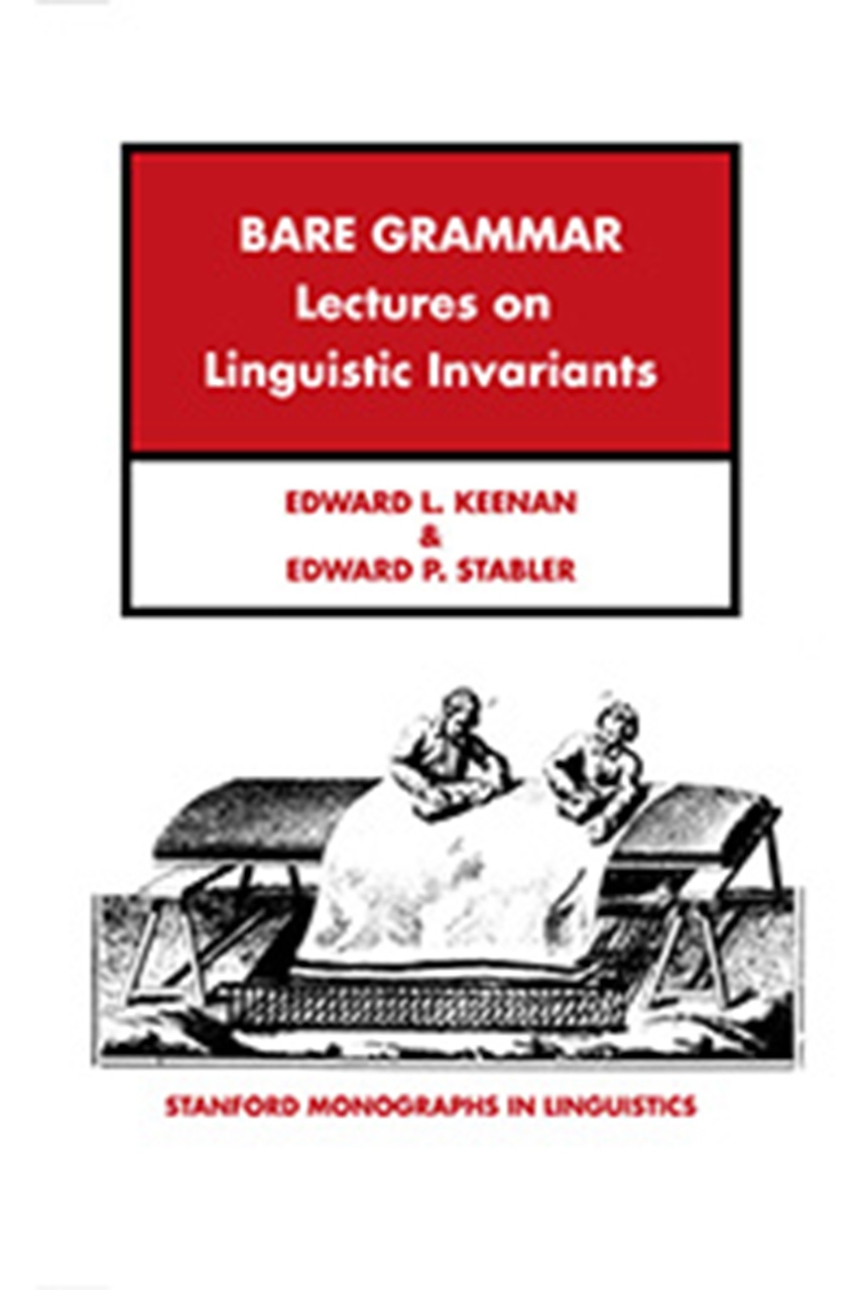9781575861883
Distributed for Center for the Study of Language and Information
Bare Grammar
A Study of Language Invariants
Drawing on general algebraic notions of structure and symmetry, this volume explores the invariants of generative grammars, showing how structural notions in generative grammar are provably invariant in grammars, and specific morphemes are invariant in exactly the same sense in languages that have them.
Edward Keenan and Edward Stabler’s analysis illustrates how relations such as the anaphor-antecedent relation can be invariant in all grammars, even if realized differently in different languages, and it argues that the existence of universal invariants does not assume that grammars of different languages are isomorphic. Bare Grammar ultimately concludes that the relation between form and meaning is not entirely arbitrary.
Edward Keenan and Edward Stabler’s analysis illustrates how relations such as the anaphor-antecedent relation can be invariant in all grammars, even if realized differently in different languages, and it argues that the existence of universal invariants does not assume that grammars of different languages are isomorphic. Bare Grammar ultimately concludes that the relation between form and meaning is not entirely arbitrary.
219 pages | 6 x 9 | © 2004
Stanford Monographs in Linguistics
Language and Linguistics: Syntax and Semantics
Table of Contents
1 Introduction
1.1 Language invariants and bare grammar
1.2 Some properties of bare grammars
2 Some case studies
2.1 A case marking language
2.2 Free word order and second position
2.3 A voice marking language
2.4 A language with relative clauses
3 Some familiar grarnmars
3.1 Context free grammars
3.2 Categorial grammars
3.3 Multiple context free grammars
3.4 Constraint-based grammars
3.5 Structure and expressive power
3.6 Summary and open questions
4 Laws of Language
4.1 The structural role of grammatical categories
4.2 A language with agreement
4.3 Constraints on recursion
4.4 Constraints relating form and meaning
Acknowledgements
References
Index
1.1 Language invariants and bare grammar
1.2 Some properties of bare grammars
2 Some case studies
2.1 A case marking language
2.2 Free word order and second position
2.3 A voice marking language
2.4 A language with relative clauses
3 Some familiar grarnmars
3.1 Context free grammars
3.2 Categorial grammars
3.3 Multiple context free grammars
3.4 Constraint-based grammars
3.5 Structure and expressive power
3.6 Summary and open questions
4 Laws of Language
4.1 The structural role of grammatical categories
4.2 A language with agreement
4.3 Constraints on recursion
4.4 Constraints relating form and meaning
Acknowledgements
References
Index

